30 left-handed guitarists who flipped the instrument on its head
We chart some of the most inspiring southpaws to ever pick up a six-string
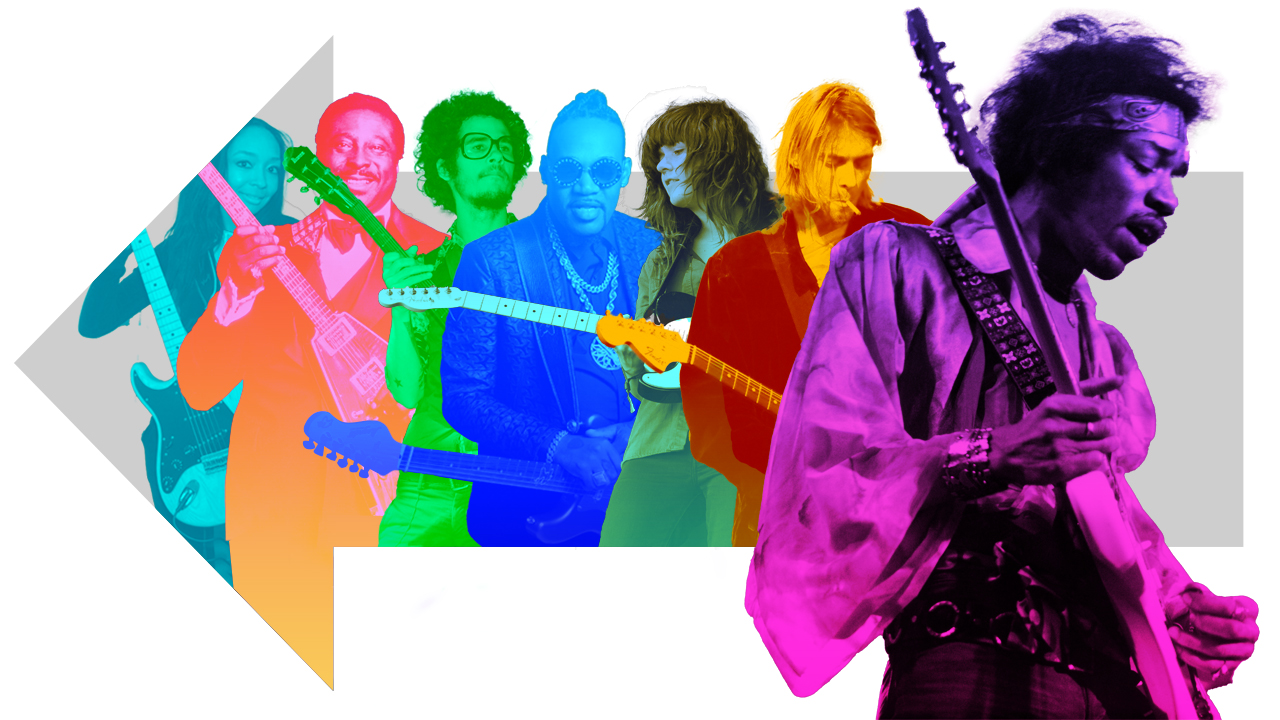
There’s a pop-psychology theory that left-handed people are more creative. Supposedly, the right hemisphere of the brain is more associated with creative activities and controlling the left side of the body.
The argument goes that people with dominant left hands are likely to have more developed right brain hemispheres, and be better at creative tasks. As with everything in neuroscience, the truth is probably that it’s more complicated than that. Still, looking at famous wielders of upside-down guitars, it’s a tempting idea.
Arguably, the GOATs of rock, blues, surf and metal have all been left-handed guitarists, while Paul McCartney and David Bowie – not the worst songwriters ever – are both lefties, too (even if Bowie plays guitar right-handed).
Perhaps it’s that left-handers are forced to be more creative, because the world is full of things that weren’t designed for them. Left-handed guitar players have never had as wide a range of quality instruments available, so they’ve often had to overcome substandard gear to make great sounds.
A surprising number of left-handed guitarists simply learned on upside-down right-handed guitars, again having to discover their own approach to the instrument because conventional techniques were impossible.
Whatever the reason, we salute the determination and inventiveness of these 30 greats of left-handed guitar, who are presented in no particular order.
1. Jimi Hendrix
When the greatest electric guitarist of all time happens to be a lefty, choosing the greatest left-handed guitarist is simple. Have you thought about how Hendrix’s left-handedness influenced his technique, though? His upside-down tremolo arm put him off palm muting, facilitating his combined rhythm and lead style with the strings ringing freely.
Get The Pick Newsletter
All the latest guitar news, interviews, lessons, reviews, deals and more, direct to your inbox!
Meanwhile, the reverse headstock made the treble strings feel looser, encouraging his outrageous string bends, and his reverse-angled bridge pickup helped him avoid the piercing treble that plagues some Strat users.
2. Kurt Cobain
It’s serendipitous that in 1991 the only decent left-handed guitar Kurt could find for sale was a Fender Jaguar. Its short scale undoubtedly influenced his playing style, and visually and sonically the guitar underlined the fact Nirvana’s music was a clean break from the 1980s mainstream.
Offset guitars’ cult following might never have kicked off without Kurt’s Jaguar, just as grunge might never have happened without his intelligent blend of power chords, melody, and dissonance.
3. Tony Iommi
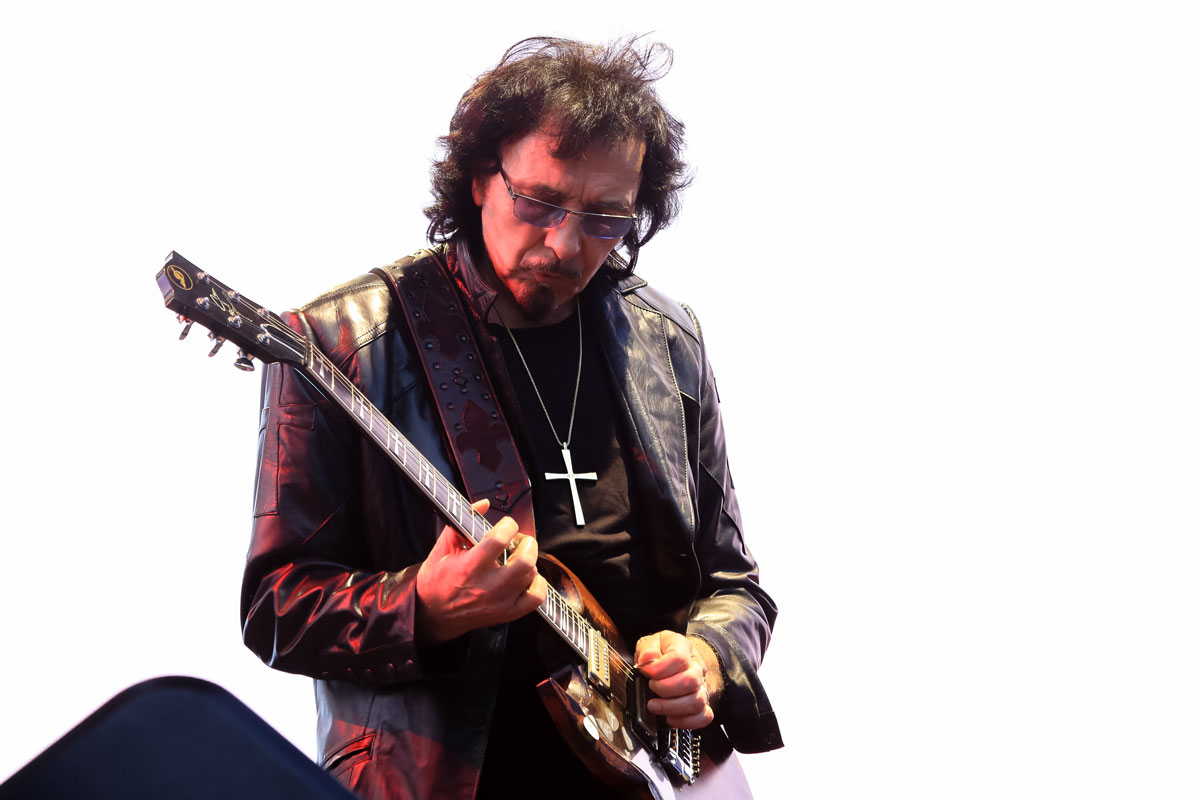
Iommi’s left-handedness is less significant to his unique sound than the loss of his fingertips in a work accident, but his awesome catalog of riffs certainly adds weight to the hypothesis that lefties are more creative.
From power chords to diminished fifths, distorted tones to down-tuning, Iommi wrote the metal guitar rulebook and then stuck around to show the young upstarts how it’s really done.
4. Albert King
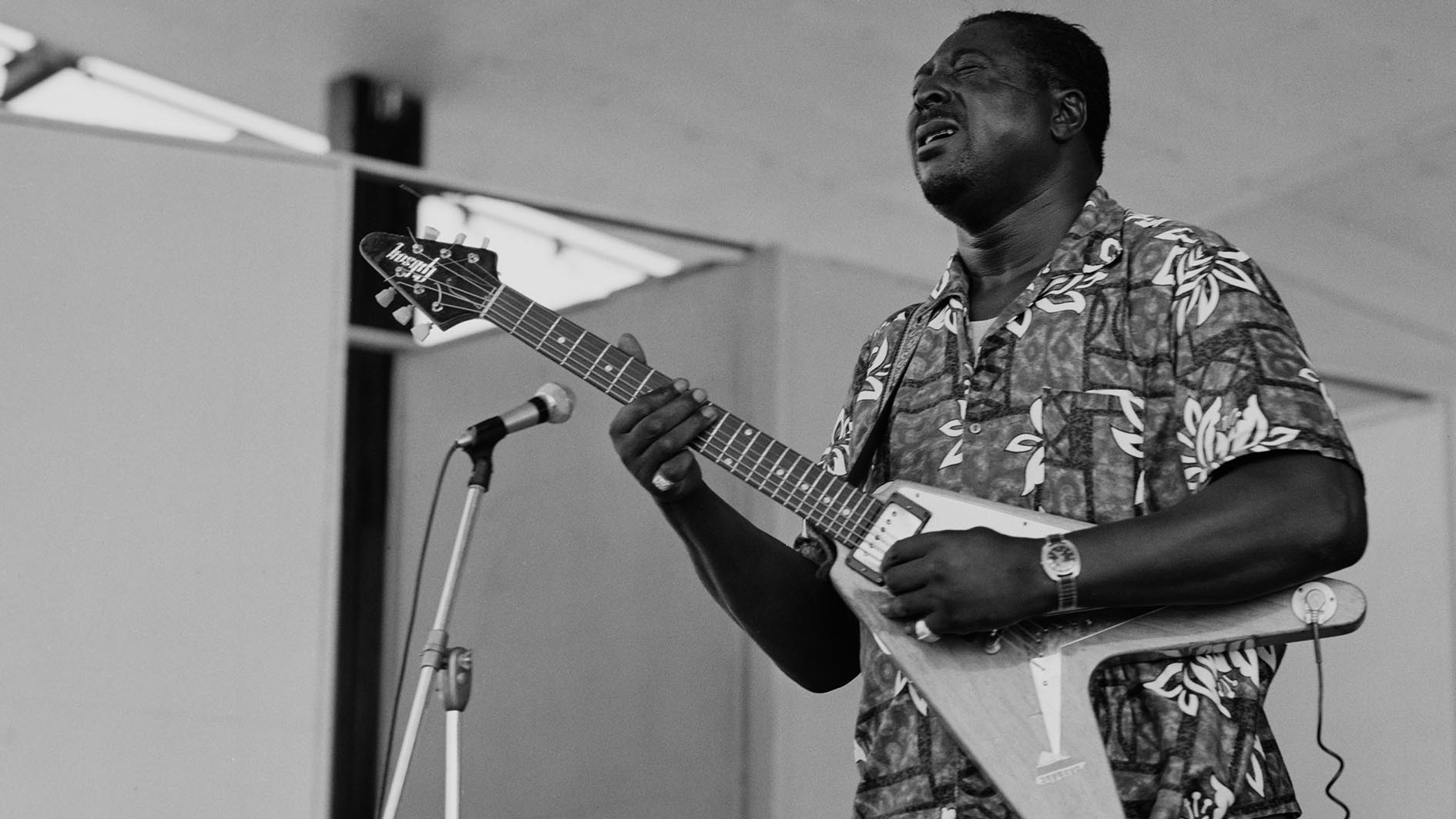
Few would have suspected that the Flying V was capable of such subtlety before King got his hands on one. His reversed strings meant King had to pull down rather than push up to bend the high E and B strings, and this enabled his immense control.
Influencing every electric blueser since – most notably Stevie Ray Vaughan – King might be the greatest string bender of all time.
5. Dick Dale
You may only recognize Dick Dale from the Pulp Fiction theme, Misirlou, but that’s enough to know he’s one of the most ferocious pickers to ever let rip on an electric guitar string.
“I rip my guts out when I play,” he told Guitar Player in 2017. “My fingers hurt so bad when I’m pulling on the strings, but I do it because that’s where the sound comes from.” No-one who heard his monster attack would doubt it.
6. Elliot Easton
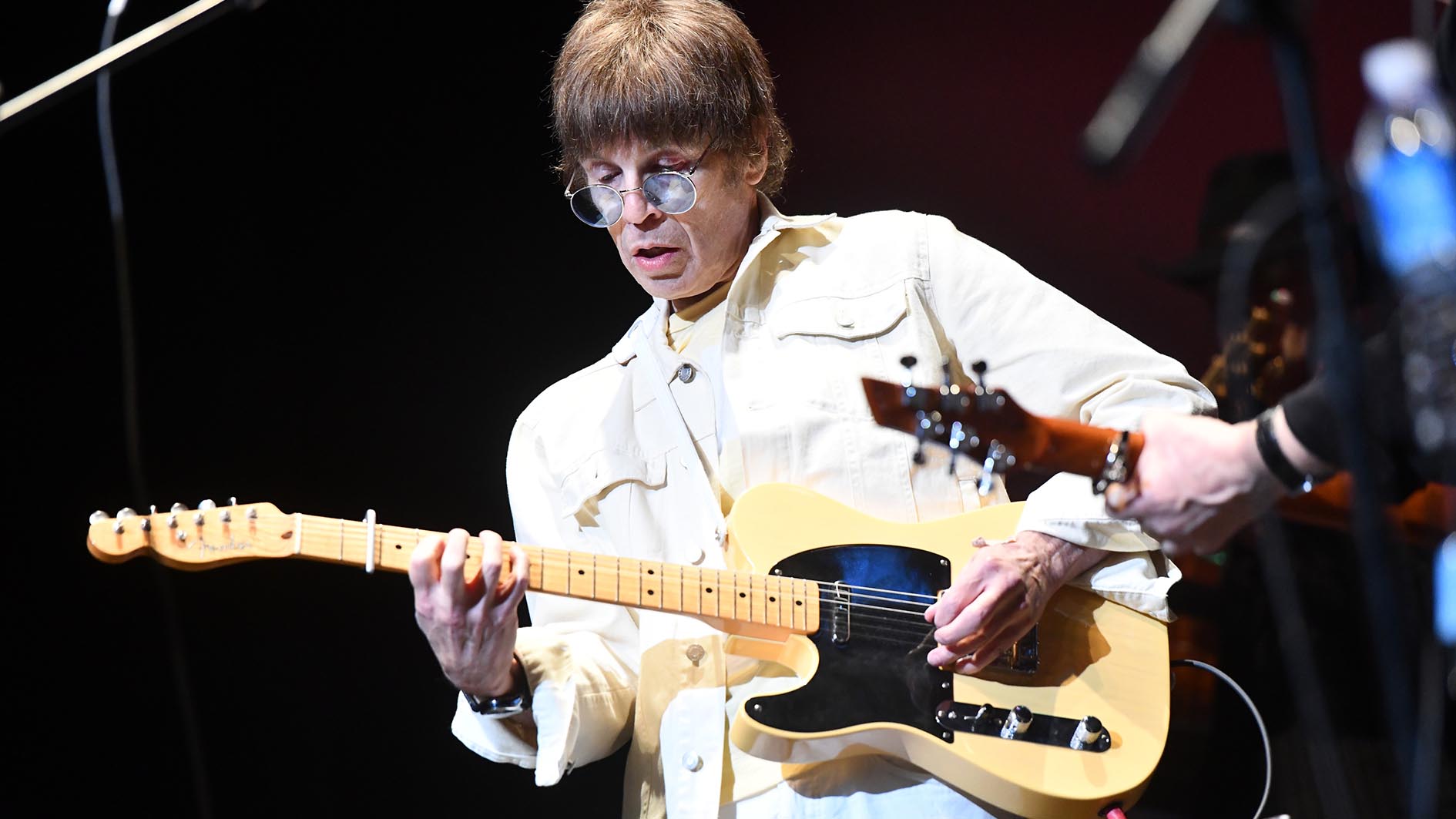
With Rick Ocasek’s killer songwriting, the Cars seemed destined for greatness, but Elliot Easton’s lead style was the ace up their sleeve. His epic chord-melody break in My Best Friend’s Girl pre-empted Brian Setzer and the rockabilly revival, and Easton’s tight palm-muted power chords have become the default choice for every hit pop-rock single since.
7. Elizabeth Cotten
Elizabeth Cotten wrote Freight Train around 1904, but when it became a hit in the ’50s, two English songwriters took credit for it. It’s fortunate this injustice was eventually corrected, because Cotten’s self-taught style (now known as ‘Cotten picking’) was an important development in fingerstyle.
Reversed strings meant she plucked the bass strings with her fingers and played the melody with her thumb. She won her first Grammy in 1984, aged 91.
8. Paul McCartney
McCartney’s position as one of the great left-handed musicians is unquestioned, but his guitar contribution may actually be underrated. His approach to fingerstyle, epitomised on Blackbird, using both sides of his index finger to pluck, gives a sound you would get from conventional travis picking. His solos on Taxman, Good Morning Good Morning, and The End, meanwhile, rival George Harrison’s best.
9. Al McKay
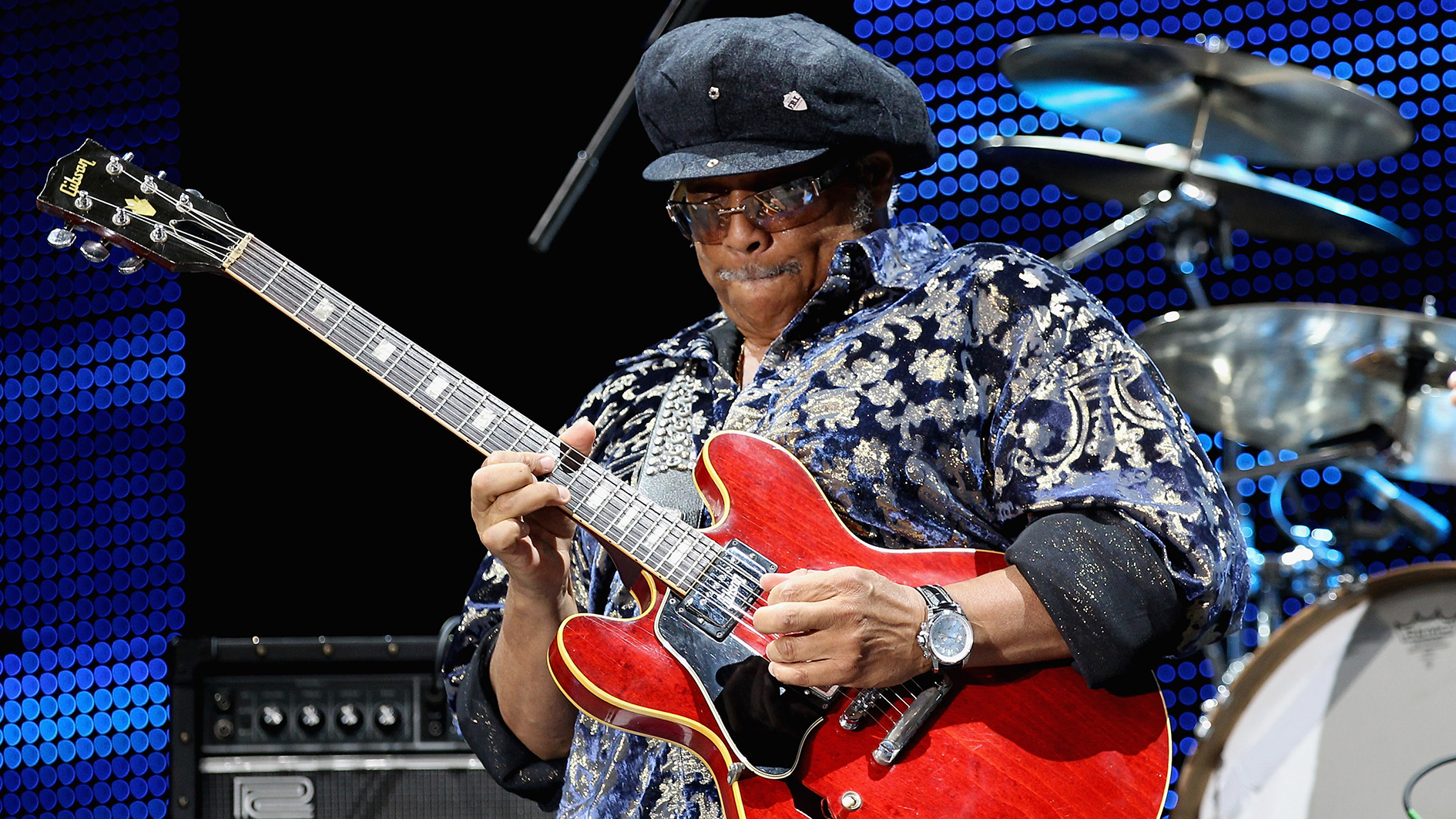
Earth, Wind & Fire aren’t primarily known as a guitar band, but Al McKay’s interplay with second guitarist Johnny Graham was essential to the groove of the band’s 1970s hits.
McKay’s masterful combination of single-note lines, jazz chords, and funky triad voicings puts him up there with Nile Rodgers as a disco guitar master.
10. Otis Rush
The Chicago blues pioneer was a primary influence on Eric Clapton, Mike Bloomfield, and Peter Green, making his licks some of the most imitated in blues history. He also recorded the first version of I Can’t Quit You Baby 13 years before Led Zeppelin. On his death, Joe Bonamassa called him “one of the last of the true masters”.
11. Babyface
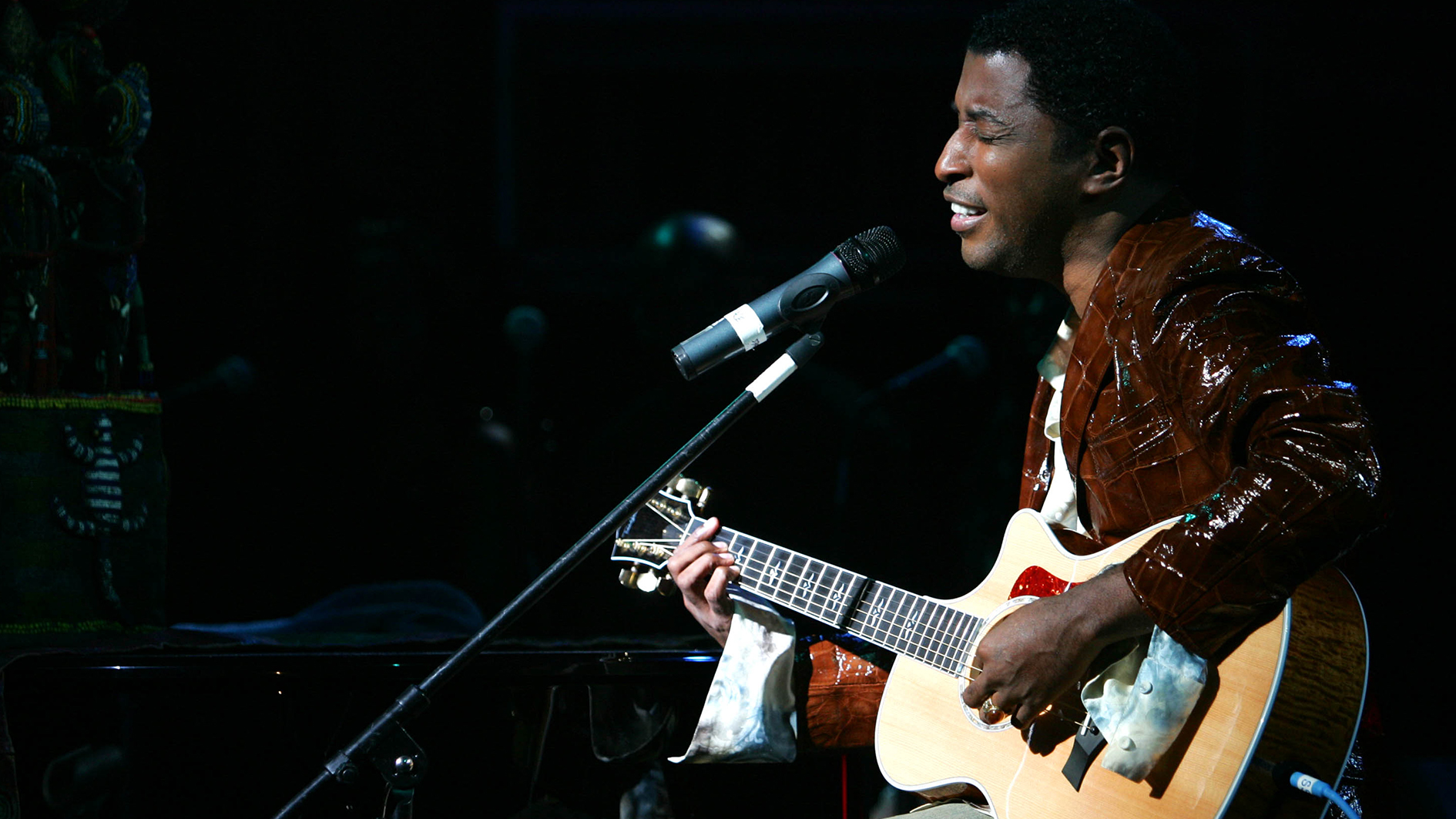
Better known as one of the most successful R&B songwriters and producers of all time, Kenneth “Babyface” Edmonds’ jaw-dropping resumé includes hits with Whitney Houston, TLC, Chaka Khan, Aretha Franklin, and pretty much every other artist of note in the genre.
It’s unsurprising, then, that he knows his way around a guitar, as he’s showcased in stripped-down solo performances of his hits. He produced Clapton’s Change Your World, too.
12. Jimmy Cliff
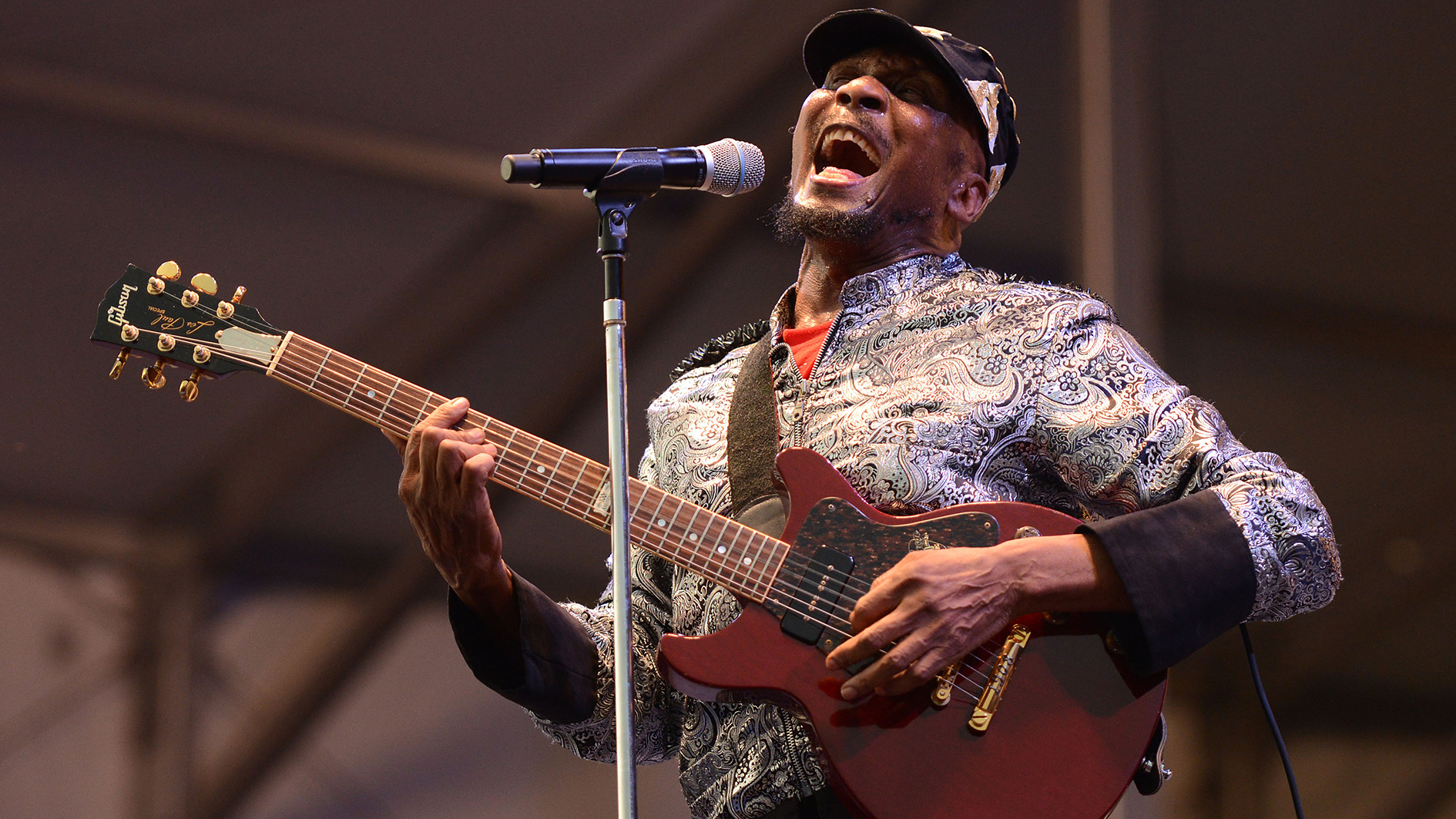
Recipient of Jamaica’s highest honour, the Order of Merit (also held by fellow reggae greats Peter Tosh and Bob Marley), Jimmy Cliff is a reggae pioneer and songwriting great.
His hits I Can See Clearly Now and You Can Get It If You Really Want are reggae standards, he’s been covered by everyone from Springsteen to New Order, and his 2012 comeback album was produced by fellow southpaw, Rancid’s Tim Armstrong.
13. Bobby Womack
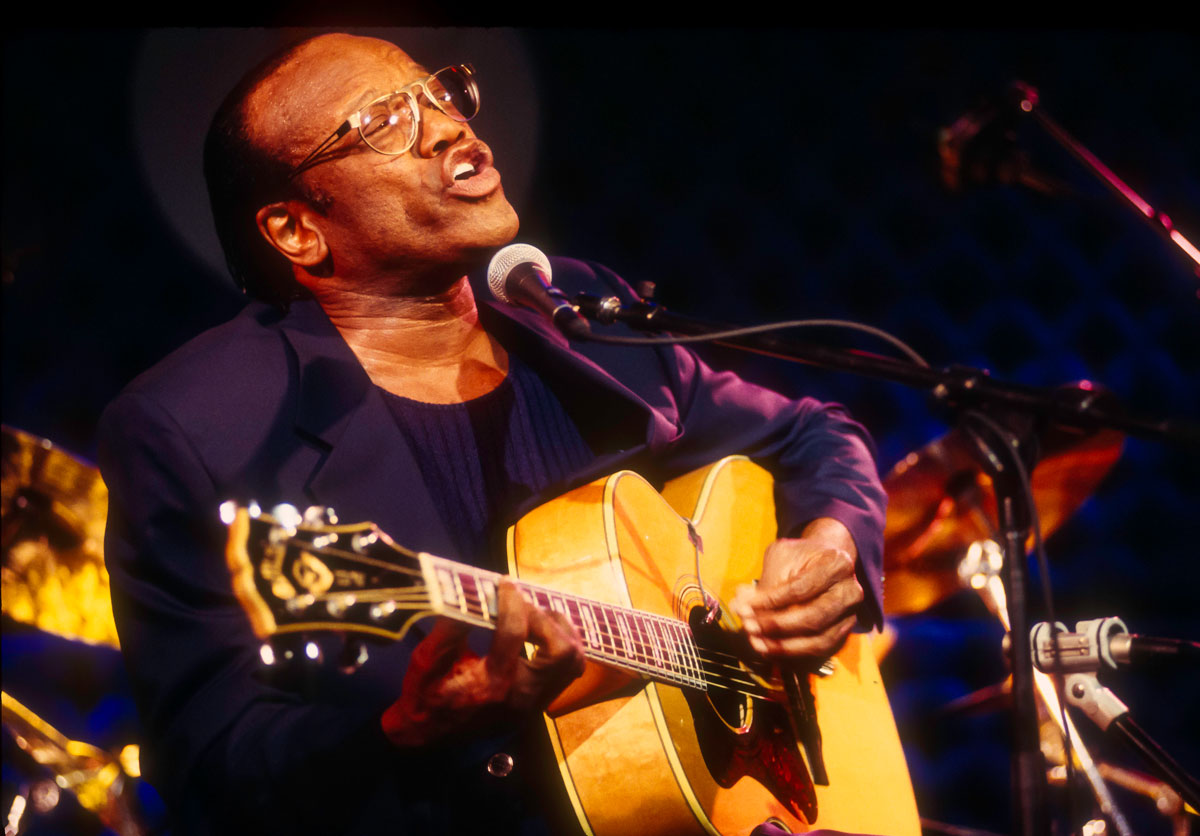
Starting out as backing guitarist to soul legend Sam Cooke was the best possible apprenticeship for Womack, who quickly became a star in his own right. His melodic double-stops and hammer-ons are a clear touchstone for Hendrix’s approach, and he wrote the Rolling Stones’ first number one, too.
14. Omar Rodríguez-López
For someone who has described the guitar as “this thing I hate”, Rodríguez-López is quite good at it. Unafraid to use effects to sound entirely un-guitar-like, and drawing influences from jazz saxophonist Wayne Shorter and minimalist composer Steve Reich, Omar has been a key figure in expanding the guitar’s palette with At the Drive-In, Mars Volta and his solo work.
15. Barbara Lynn
A comparative rarity among soul stars as a guitarist and vocalist, Lynn was also a prolific songwriter. Her use of a thumbpick meant she got a range of sounds just by switching between pick and fingers, and she had all the groove you’d expect from someone who’s toured with James Brown, Stevie Wonder, and Gladys Knight. Still, Lynn didn’t play second fiddle to anyone, as the 1966 footage above shows.
16. Mdou Moctar
Even the most jaded observers of guitar are excited by Mdou Moctar, who provides something genuinely new to rock audiences. His Tuareg and assouf (desert blues) influences bring fresh rhythms and note choices to the guitar hero vocabulary, while his fiery improvisation shows him to be a worthy heir to Hendrix.
17. Eric Gales
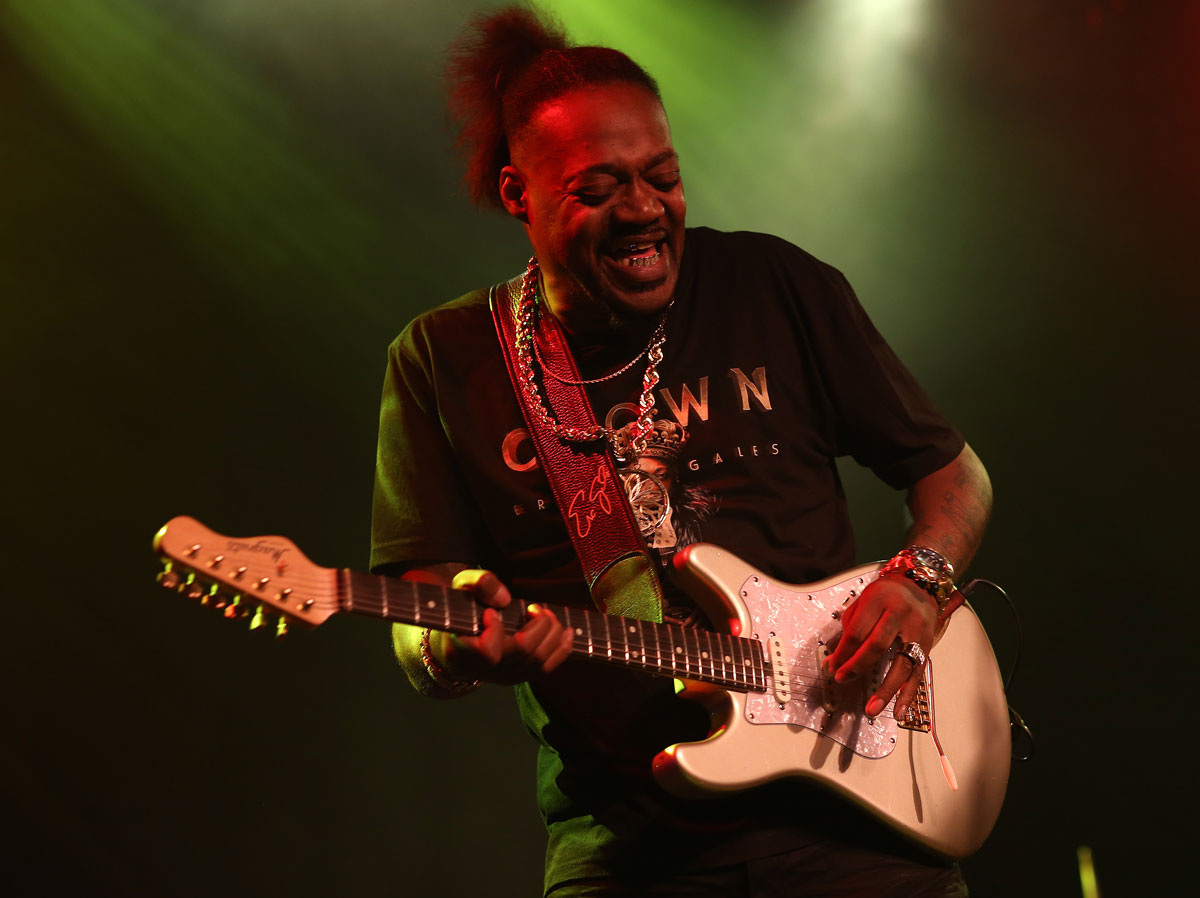
A right-handed interloper on this list, Gales learned to play this way by learning from his left-handed brother. His use of upside-down Strats draws inevitable Hendrix comparisons, but Gales has the feel, tone, and chops to weather those comparisons. His live versions of Beethoven’s Für Elise also show that classical influences aren’t just for Yngwie Malmsteen.
18. Tim Armstrong
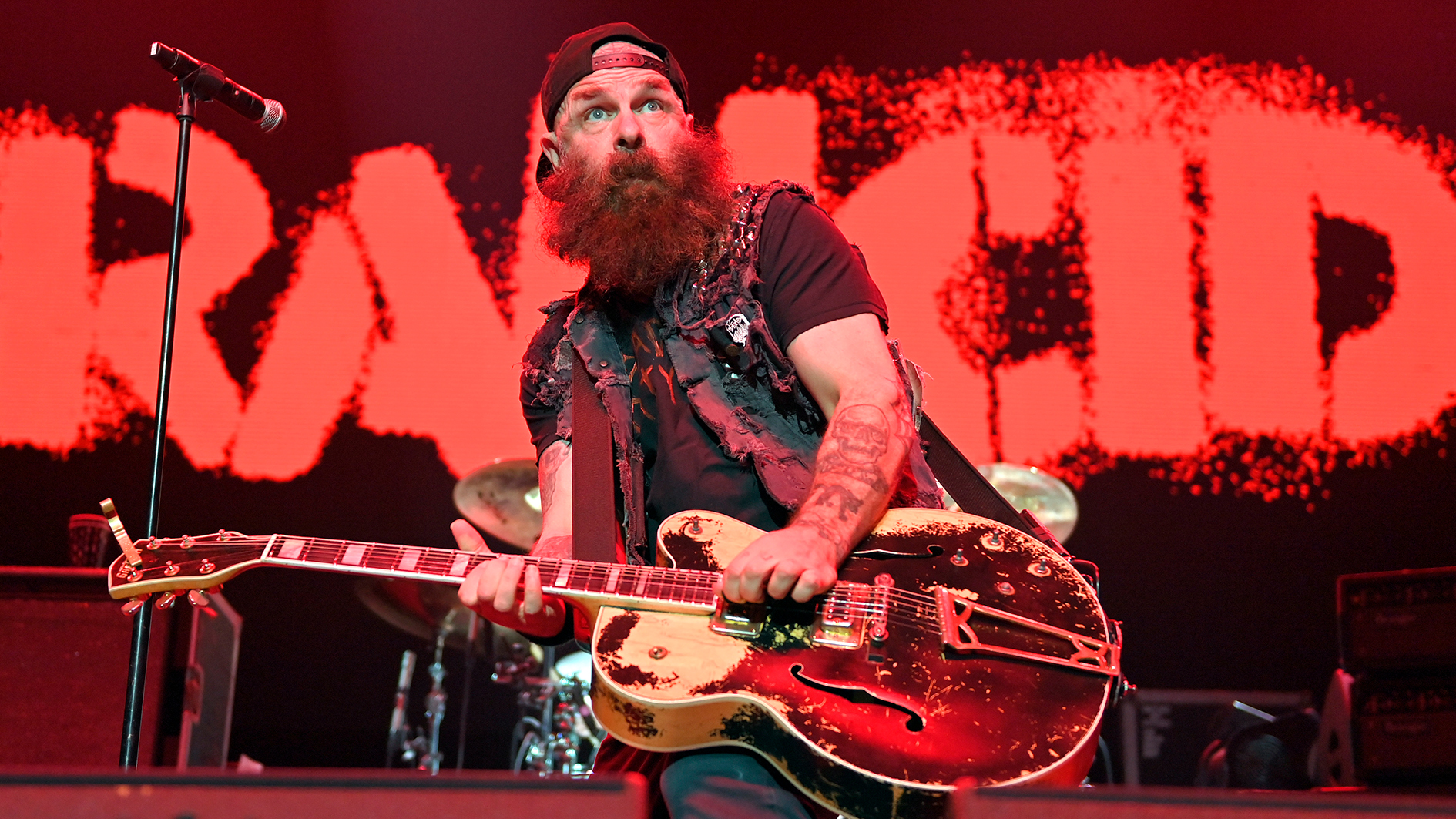
Armstrong understands better than most the importance of a great song, and he’s written more than a few both for his own bands – Rancid, Operation Ivy, and Transplants among them – and on his collaborations with P!nk and Joe Walsh.
With his Gretsch slung around his knees, Armstrong’s playing has the epic precision needed for punk and ska.
19. Malina Moye
Her dad’s a pro bassist, her mom sang backup for Tina Turner, so Malina Moye’s stardom seemed inevitable. Her trademark surf green Strat has graced stages with Hubert Sumlin and Chaka Khan, and in 2012, she became the only woman on the Experience Hendrix tour.
Her blues-inflected brand of funk rock grooves extremely hard, exemplified by her single K-yotic, featuring Bootsy Collins.
20. Doctor Isaiah Ross
Born in the Mississippi Delta in 1925, Ross drew comparisons to John Lee Hooker and Sonny Boy Williamson, but he had the novelty of performing as a one-man band. He never achieved major stardom, perhaps because he kept his job at General Motors even after he got signed, but this also spared him the poverty many blues pioneers suffered. His single Cat Squirrel was covered by Cream and Jethro Tull.
21. Doyle Bramhall II
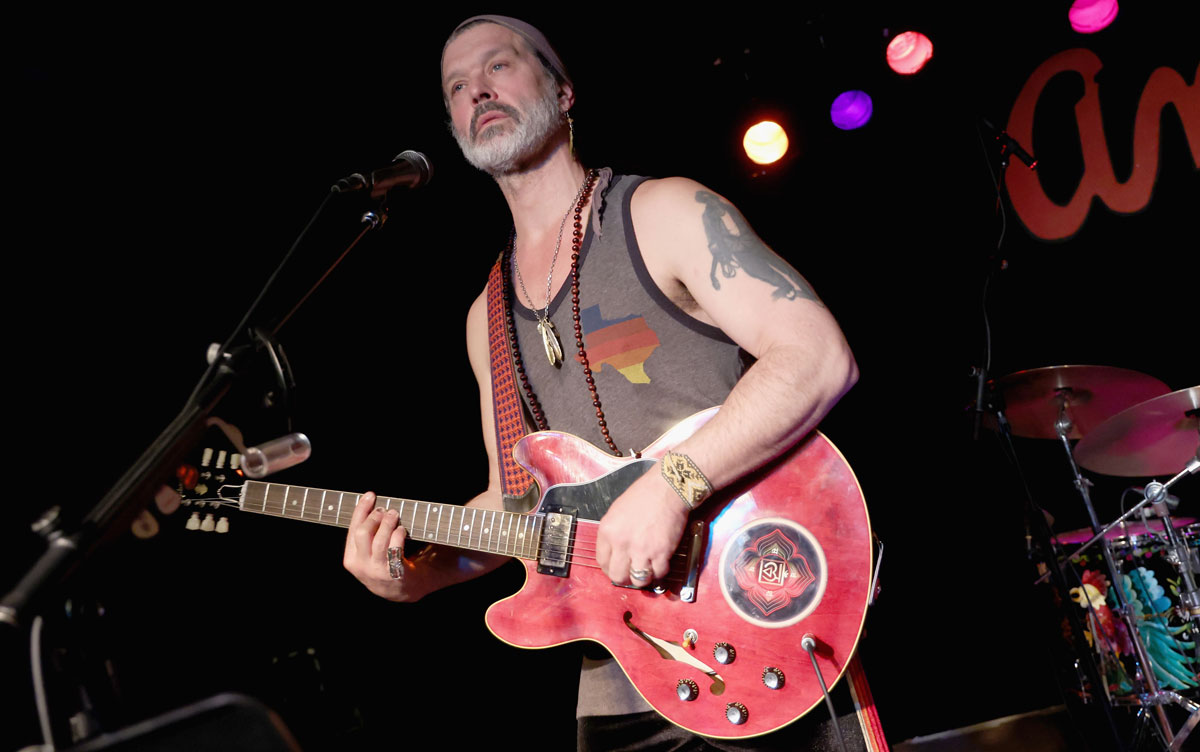
The blues seems an unlikely genre for the creation of dynasties, but Bramhall’s dad, Doyle Sr, played drums for Freddie King and was a lifelong friend of the Vaughan brothers. Accordingly, Bramhall II toured with the Fabulous Thunderbirds at 18 before joining Roger Waters’ touring band and then playing with Clapton and BB on Riding with the King.
22. Ernie C

Left-handed guitarist with Ice-T’s pioneering rap-metal crossover Body Count, Ernie C’s brutal riffing has been the bedrock for incendiary moments like Cop Killer, No Lives Matter, and KKK Bitch. As if that’s not enough, Ernie C also produced an early Rage Against the Machine demo, which makes him both a legend and ultimately to blame for nu-metal.
23. Shamir
Because his first guitar was an acoustic with a symmetrical body, the young (right-handed) Shamir did not realise he was playing it upside down. He's since turned this into a strength though.
“Since I play upside down, I can’t use the cutaway,” he commented, “I can’t do ‘guitar hero’ solos, but I think it’s made me a pretty damn good rhythm guitarist… It’s forced me to write with really intricate chords and riffs that also feel big.”
24. Courtney Barnett
Rolling Stone called her “one of the world’s sharpest songwriters”, and Barnett has a knack for producing guitar parts that serve those songs without being anonymous.
Her fingerstyle approach to electric guitar gives her a big dynamic range and she creates unaccompanied guitar breaks that are both melodic and rhythmic at the same time.
25. Hayley Kiyoko
Her pop hits, with streams running to the hundreds of millions, make little use of her guitar talents, but Kiyoko started out performing self-penned guitar songs on social media. She shows guitar is still an effective tool for crafting great songs, even when those songs are later produced with electronic arrangements.
We hope she’ll return to guitar though, because the sliding major 7ths on Bittersweet are just cool.
26. Ben Howard
With his unusual pick-and-go technique, extreme altered tunings, and inventive use of a partial capo, Howard is rightly acclaimed as a modern acoustic trailblazer. On Only Love, for example, his guitar is tuned A#-F-C-G-G-C, a tuning more likely to show up with Meshuggah than John Martyn.
27. Toronzo Cannon

It’s generally accepted that the list of Chicago blues greats is complete, with no names to be added, but Cannon shows the Windy City is not done teaching us about electric blues.
Sometimes toting a dual-humbucker Strat, Cannon is a real-deal blueser, combining social commentary in his songs with heartfelt guitar playing topped off with killer vibrato.
28. Maria Taylor
Taylor’s guitar parts have a vulnerability and intimacy that complements her songwriting perfectly. Like Keith Richards, she only uses five strings (although Taylor prefers to ditch the high E).
She’s collaborated with Phoebe Bridgers, Michael Stipe, and Counting Crows’ Adam Duritz, but her work stands on its own two feet.
29. Zacky Vengeance

The less heralded of Avenged Sevenfold’s guitar partnership, Vengeance keeps pace with Synyster Gates on their shredding harmonised passages and lays down some of the most intense riffing of the 21st century.
Modern metal players need to be improbably tight and wildly aggressive, and this left-handed guitarist can bring both effortlessly.
30. Michael Angelo Batio
While some may see his double-guitar playing as something of a gimmick, there's no doubting Michael Angelo Batio's ambidextrous chops. We can't find footage of him playing a purely left-handed guitar, but his wizardry on those double-guitars leaves no doubt he's got chops enough for two guitarists. A truly ridiculous shredder.
Jenna writes for Total Guitar and Guitar World, and is the former classic rock columnist for Guitar Techniques. She studied with Guthrie Govan at BIMM, and has taught guitar for 15 years. She's toured in 10 countries and played on a Top 10 album (in Sweden).
“His songs are timeless, you can’t tell if they were written in the 1400s or now”: Michael Hurley, guitarist and singer/songwriter known as the ‘Godfather of freak folk,’ dies at 83
“The future is pretty bright”: Norman's Rare Guitars has unearthed another future blues great – and the 15-year-old guitar star has already jammed with Michael Lemmo





















